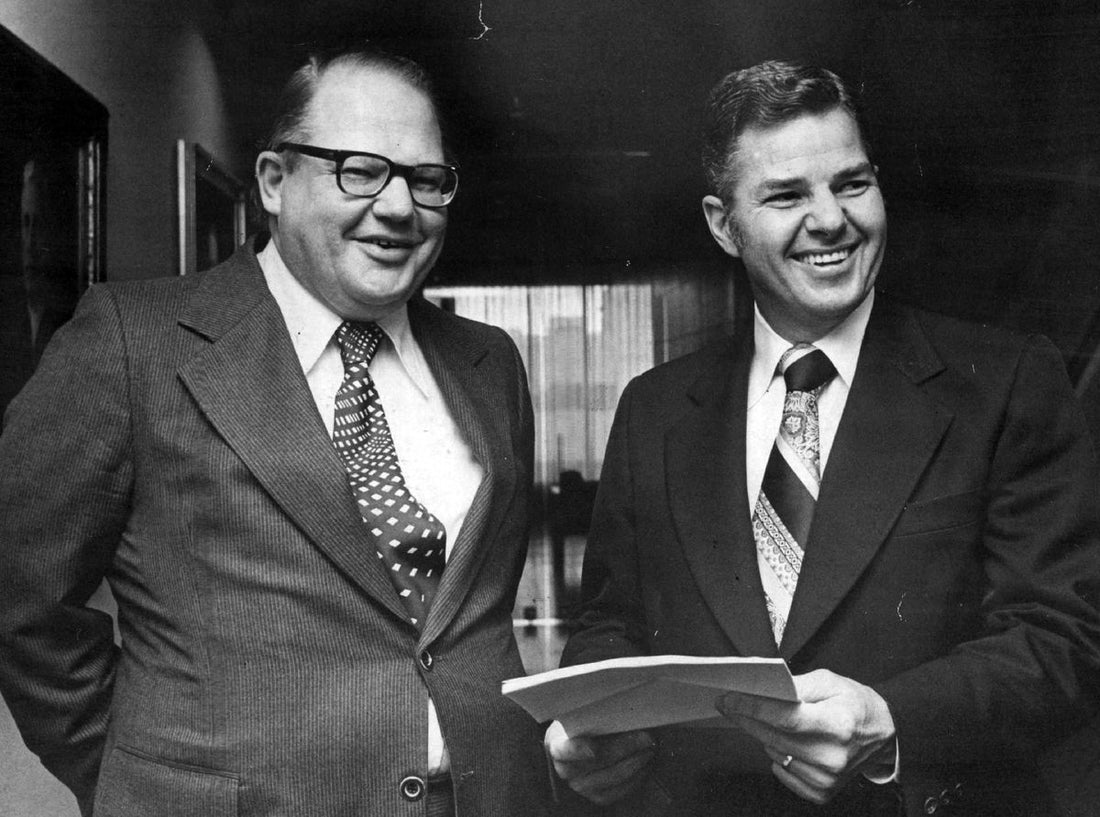It's a saga that almost sounds fictional but it's the real-life story of two American wealthy brothers who cornered the
silver market and caused the price of silver to rocket from $2 an ounce (all currency US) to more than $50 an ounce.
It all began when oil tycoon H.L. Hunt died in 1974,
leaving his sprawling inheritance of billions to his family, including sons Herbert and Nelson. They took their oil money boon and invested into the commodities market. The Hunt brothers believed that inflation would cause silver to become a haven, just like its more expensive cousin, gold. Nelson, especially, believed there would be inflationary pressures that would mangle the value of any investments denominated in or tied to paper currency. They reportedly bought more than 35 million ounces of silver, some of which they flew to Switzerland in specifically crafted airplanes guarded by armed Texas ranch hands. By stockpiling this silver and using their large
cash reserves to buy up even more futures, the billions in demand caused the rise of silver to more than $50 per ounce. The silver-loving siblings continued to take delivery,
borrowing heavily to snatch even more futures on silver once their immediate cash was all tied up. By 1980, with every dollar increase in the price of silver, the Hunts were making $100 million on paper.
And silver was hot, like fiery hot!

Grandmothers were selling their silverware, thieves were making off with not just gold jewellery but also silver items, and the silver craze swept from coast to coast. The government and economic authorities took notice and were not pleased. On Jan. 7, 1980, in response to the Hunts’ prime position, Comex and the Chicago Board of Trade imposed emergency rules. Among these were higher margin requirements. This move stopped the Hunts from increasing their positions by temporarily suspending the fundamental rules of the commodities market. And so the price of silver began to slide. Margin calls on the loans began to bruise the Hunts' reserves to the point of no return. They paid millions a day in calls, storage fees and interest.
On March 27, what's known as “Silver Thursday,”
the silver futures market bottomed out by a third to $10.80. Around two months earlier, these contracts had been trading at four times that amount. The Hunts had put up oil and gas leases, real estate, coal leases, antiques, even a Mercedes and a Rolex, and lost them all, as the Seattle Times
notes. The report adds: "A $180 million judgment against them pushed the Hunts into bankruptcy. All Bunker Hunt had left from his billions were a few million, a stable of racehorses and a $90 million tax bill to be paid over a 15-year period." In the words of then CFTC chief James Stone, as Priceonomics
writes, the Hunts’ antics had threatened to blast a hole in the “financial fabric of the United States” like nothing had in decades. Writing about the entire episode a year later,
Harper’s Magazine described Silver Thursday as “the first great panic since October 1929.”
 The Hunt brothers testifying before Congress in 1980
The Hunt brothers testifying before Congress in 1980
The Hunt brothers endured more anguish.
They faced Congressional hearings, and dove into a legal battle with their lenders. They were then sued by a Peruvian mineral marketing company, which had suffered big losses in the crash. In 1988, a New York City jury levied a penalty of over $130 million against the Hunts. The jury ruled that they had deliberately conspired to
corner the silver market. The ripple-effect of the Hunt brothers story can be felt this decade. In November 2013, the CFTC proposed limiting the number of contracts a single trader can hold across a variety of markets. A key reference was the Hunts’ silver trading, an example of when these limits are necessary. And the CFTC has stayed busy in the area of trading silver on margin. Read our discussion of the USD 290 million
Monex issue here.
 Grandmothers were selling their silverware, thieves were making off with not just gold jewellery but also silver items, and the silver craze swept from coast to coast. The government and economic authorities took notice and were not pleased. On Jan. 7, 1980, in response to the Hunts’ prime position, Comex and the Chicago Board of Trade imposed emergency rules. Among these were higher margin requirements. This move stopped the Hunts from increasing their positions by temporarily suspending the fundamental rules of the commodities market. And so the price of silver began to slide. Margin calls on the loans began to bruise the Hunts' reserves to the point of no return. They paid millions a day in calls, storage fees and interest.
Grandmothers were selling their silverware, thieves were making off with not just gold jewellery but also silver items, and the silver craze swept from coast to coast. The government and economic authorities took notice and were not pleased. On Jan. 7, 1980, in response to the Hunts’ prime position, Comex and the Chicago Board of Trade imposed emergency rules. Among these were higher margin requirements. This move stopped the Hunts from increasing their positions by temporarily suspending the fundamental rules of the commodities market. And so the price of silver began to slide. Margin calls on the loans began to bruise the Hunts' reserves to the point of no return. They paid millions a day in calls, storage fees and interest.


